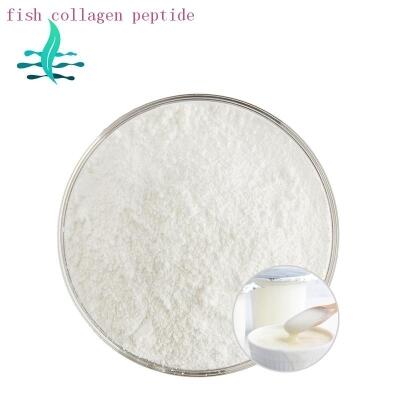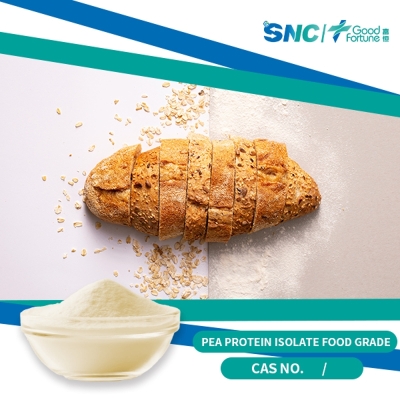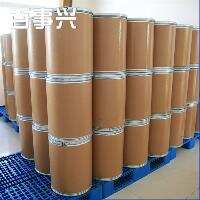There is a serious oversupply of lysine Market development in urgent need of a new blue sea.
-
Last Update: 2020-07-30
-
Source: Internet
-
Author: User
Search more information of high quality chemicals, good prices and reliable suppliers, visit
www.echemi.com
;.overcapacity has been prominent in the domestic API field in recent years. The field of lysine in the production technology mature and veterinary drug market boom factors, the rapid expansion of domestic production capacity, has also been caught in the problem of serious overcapacity.jump ingon growthChina's lysine market has experienced a short period of "golden age". At that time, lysine in the international market has a "intelligence amino acid" reputation, therefore, lysine-type health care products in the domestic market once popular, it is said that some coastal cities have sold to the broken gear..lysine health care products so popular, no doubt promote many domestic manufacturers to compete for lysine production line..the production process of lysine is much the same as glutamate, and in theory, any factory with glutamate fermentation capacity can basically be transferred to lysine. The lower entry threshold, coupled with the extreme popularity of lysine sales at the time, so in just a few years there were one or twenty pharmaceutical plants in the country on the lysine production line..but unexpected situation is that in the following years the domestic lysine health care products market quickly cooled, resulting in a large backlog of products later on the lysine production plant and the national lysine "big bad market" phenomenon, manufacturers lost a lot of money. According to medical media reports at the time, the country has about tens of thousands of tons of lysine products in the warehouse backlog no one asked. China's lysine industry has therefore been in a low ebb for ten years..and the resurgence of lysine in China is thanks to a new discovery by Western researchers in 1998 that the best way to keep pigs and poultry lean and reduce body fat accumulation is to add lysine to animal feed. The researchers say that adding lysine to animal grain feed in proportion not only accelerates livestock or poultry growth, shortens storage time, but also greatly increases the proportion of lean meat, and that pork or chicken fed with lysine feed tastes better..the most lacking grain feed ever used in farms around the world is lysine. This new discovery establishes the irreplaceable importance of lysine in feed additives..since then, the world lysine industry began to "jump up". In 1975, the total global production of lysine was only 0.7 million tons, and in 1995 it has risen rapidly to 300,000 to 330,000 tons. It is estimated that more than 1 million tons were exceeded in 2008. . nextPage. In 2005 became a large country of production and marketing with the domestic corn starch as raw material fermentation production lysine technology continuous improvement and increasingly mature, all over the country have opened a new line of lysine production. By the end of 2005, the country's total production of lysine had reached 570,000 tons. At the end of 2008, the relevant departments estimated that the total domestic production capacity of lysine was close to 700,000 tons. . domestic lysine production of the "leading boss" is Jilin Changchun Dacheng company. According to domestic media reports, after years of expansion, Dentons company's current lysine production capacity has reached 150,000 tons, 80% of China's lysine exports also from Dentons. Several other companies with larger lysine production capacity are: Sichuan Flavor Company, with an annual output of about 31,000 tons; Daquan Lysine Company, with an annual output of about 25,000 tons; Gold Corn Biochemical Company, with an annual output of about 20,000 tons; Anhui Fengyuan Group, with an annual output of about 22,000 tons; Xiwang Group, with an annual output of about 20,000 tons; and Star Lake Lysine, with an annual output of about 20,000 tons. In addition, there are 10 or 20 small companies in the country producing lysine. . China's total lysine production capacity is large and dispersed, unlike Japan, the Netherlands and the United States and other developed countries lysine production concentrated in the hands of a few large companies. Foreign lysine manufacturers are mainly Japan's Misoin, Concord Fermentation Co., Ltd., the Netherlands DSM Corporation and the United States Cargill Corporation. . to 2005, China has actually become the world's largest producer and producer of lysine. The total production of lysine has already overwhelmed the lysine producing countries such as Japan and the Netherlands, thus completing the transition from a pure importer of lysine to an exporter. . The lysine products produced by Dentons have successfully entered the European lysine market. Europe has always been the world's major breeding concentration region, its meat production in the world occupies a high share of the rhododite is in great demand. From the former European lysine market suppliers mainly for the Netherlands DSM company and Japan's miso and Concord fermentation two Japanese companies. Since Dentons knocked on the door of the European lysine market, because the quality of products in China is basically the same as that of European producers, and the average price is 1 to 2 euros / kg lower, so more and more European merchants began to turn to imported Chinese lysine products. the deterioration of the export environment in recent years subsequently, the number of lysine exports in China has been increasing year by year. However, due to the large amount of industrial waste water discharged in the production process, which causes great pollution to the local environment, the export environment has gradually tightened in recent years, such as in 2007, the export volume is reduced by nearly 20,000 tons compared to 2006. . According to the analysis of the Chinese Medical Insurance Chamber of Commerce, when the relevant state departments in order to reduce the "high energy consumption, high pollution" two high-volume products export volume and adopt a new policy to reduce the export tax rebate rate of two high industrial products, lysine is also in the export tax rebate adjustment product list, its export tax rebate rate from the past 13% to 5%, resulting in a lot of rely on the state export tax rebate to obtain profits of lysine small and medium-sized enterprises export situation seriously deteriorated. . in this case, some domestic lysine production enterprises take the initiative to compress lysine production, reduce product exports and start to reduce prices competition, competition for the domestic lysine market. Last year coincides with the international financial crisis, European countries have reduced the amount of lysine imports, so that China's lysine exports have been in recession for two consecutive years, did not reach the 2006 lysine export peak year of the number. At the same time, the domestic part of lysine production enterprises, the operating rate is seriously inadequate. . nextPage. Exports to undertake excess capacity in recent years, the Southeast Asian countries led by Vietnam poultry industry has developed rapidly, the demand for lysine and other poultry feed additives increased rapidly. It is understood that Vietnam has so far been afactorysine production plant, all lysine from imports. . a few years ago, Vietnam was the main export market for Thailand's lysine, a wholly-owned thai-based company based in Japan. After nearly ten years of rapid development, China's lysine industry now has the strength of competition with Japan lysine. As China's export lysine price is lower than the Thai products of the company, therefore, now Vietnamese merchants began to directly import Chinese lysine products. It is reported that in addition to Vietnam, including Indonesia, the Philippines and other Southeast Asian countries poultry industry is very developed, they are likely to become China's new export of lysine new market. . China's lysine industry has a serious overcapacity, the country's total production of lysine can be 600,000 to 700,000 tons, the actual annual output of about 300,000 to 350,000 tons, estimated that 50% of the production capacity "empty"; For these seriously under-utilized lysine manufacturers, the most urgent task now is to find foreign markets. . China since 2000 pig, chicken and other poultry stock are ranked first in the world. The extraordinary development of China's feeding industry naturally led to the rapid development of the feed additive industry, as one of the feed additives, the demand for lysine in China increased year by year, in 1998 the national feed-grade lysine consumption of 287,000 tons, in 2008 increased to 280,000 tons. However, the maximum demand for lysine in the domestic breeding industry is unlikely to exceed 400,000 tons, so other lysine capacity must find its own way out. This way out is undoubtedly in overseas markets. View point emerging markets deserve attention the author believes that when the international pharmaceutical community has not yet discovered a more important new role in the use of lysine medicine/health care products, the new market for the export of lysinine products in China should be located in African countries such as Nigeria and emerging market countries such as Brazil, India and Russia. The reason is: 1, Africa, Nigeria has a population of more than 100 million, belongs to Africa's largest country, in recent years, Nigeria's oil production has increased year by year, government revenue has increased significantly, national life began to become rich, the demand for meat food will increase. Nigeria has the strength to develop the livestock industry, so China's increased exports of lysine and other products to the country is very promising. . 2, Russia is a large country across Europe and Asia, with a population of more than 260 million, and is still one of the world's largest countries. Russians like to eat pork, ham and sausage very much, so the pig breeding industry in Russia has a good future. Although Russia has abundant feed grains such as wheat or corn, it still needs to import a certain amount of lysine. China and Russia have geographical proximity benefits, in the future, China should be Russia as one of the new export markets of lysine. . 3, India and Brazil are both populous countries, but Indians like to eat chicken and not beef, while Brazilians, on the other hand, like roast beef and few, both men, women and children. However, in recent years, Brazil is also actively developing the poultry industry, so China's exports of lysine to India and Brazil should have broad market space. Chinese enterprises should actively study the market situation of these two emerging industrial countries and increase the promotion of lysine products in these two countries. . lysine has become China's production and sales after glutamate second largest amino acid products, but now the problem is China's lysine production capacity is seriously overcapacity, compared with glutamate production has exceeded 1 million tons, but basically can achieve the balance of production and sales, there is little backlog phenomenon. Lysine domestic market capacity is only about half of its capacity, so domestic lysine production enterprises should actively explore new overseas markets, in order to solve the domestic overcapacity problem as soon as possible. . The problem of overcapacity has been prominent in the field of domestic API in recent years. The field of lysine in the production technology mature and veterinary drug market boom factors, the rapid expansion of domestic production capacity, has also been caught in the problem of serious overcapacity. jump ingon growth China's lysine market has experienced a short period of "golden age". At that time, lysine in the international market has a "intelligence amino acid" reputation, therefore, lysine-type health care products in the domestic market once popular, it is said that some coastal cities have sold to the broken gear. . lysine health care products so popular, no doubt promote many domestic manufacturers to compete for lysine production line. . the production process of lysine is much the same as glutamate, and in theory, any factory with glutamate fermentation capacity can basically be transferred to lysine. The lower entry threshold, coupled with the extreme popularity of lysine sales at the time, so in just a few years there were one or twenty pharmaceutical plants in the country on the lysine production line. . but unexpected situation is that in the following years the domestic lysine health care products market quickly cooled, resulting in a large backlog of products later on the lysine production plant and the national lysine "big bad market" phenomenon, manufacturers lost a lot of money. According to medical media reports at the time, the country has about tens of thousands of tons of lysine products in the warehouse backlog no one asked. China's lysine industry has therefore been in a low ebb for ten years. . and the resurgence of lysine in China is thanks to a new discovery by Western researchers in 1998 that the best way to keep pigs and poultry lean and reduce body fat accumulation is to add lysine to animal feed. The researchers say that adding lysine to animal grain feed in proportion not only accelerates livestock or poultry growth, shortens storage time, but also greatly increases the proportion of lean meat, and that pork or chicken fed with lysine feed tastes better. . the most lacking grain feed ever used in farms around the world is lysine. This new discovery establishes the irreplaceable importance of lysine in feed additives. . since then, the world lysine industry began to "jump up". In 1975, the total global production of lysine was only 0.7 million tons, and in 1995 it has risen rapidly to 300,000 to 330,000 tons. It is estimated that more than 1 million tons were exceeded in 2008. . nextPage. In 2005 became a large country of production and marketing with the domestic corn starch as raw material fermentation production lysine technology continuous improvement and increasingly mature, all over the country have opened a new line of lysine production. By the end of 2005, the country's total production of lysine had reached 570,000 tons. At the end of 2008, the relevant departments estimated that the total domestic production capacity of lysine was close to 700,000 tons. .
This article is an English version of an article which is originally in the Chinese language on echemi.com and is provided for information purposes only.
This website makes no representation or warranty of any kind, either expressed or implied, as to the accuracy, completeness ownership or reliability of
the article or any translations thereof. If you have any concerns or complaints relating to the article, please send an email, providing a detailed
description of the concern or complaint, to
service@echemi.com. A staff member will contact you within 5 working days. Once verified, infringing content
will be removed immediately.







